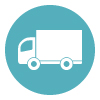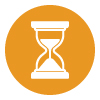By Sid Powar | COE Director of Supply Chain

Let’s see how this affects your business and why technology like Anaplan helps resolve some, if not all, types of waste.
Research has shown that waste affects not only production and manufacturing organizations but all types of supply chain organizations : Oil & gas, retail, food manufacturing, professional services, etc.
Waste costs organizations billions in lost revenues every year.
What is waste?
We can agree that waste is undesirable, both at work and in our personal lives. Waste is something that is unwanted, poor quality, or bad for the environment. It is something that doesn’t bring anything of value to what is being created. In Lean, waste is all of the activities that don’t create any value for the customer. Value-added activities are those that directly or indirectly lead to an outcome, which a customer is willing to pay for (creating higher value-add), everything else is considered waste. There are two types of wastes:
- Necessary waste: non-value adding activities for customers
- Pure waste: Unnecessary non-value adding activities for customers
Reducing necessary waste requires careful analysis before any actions to reduce them are taken, or else it can impact the quality of the products or the financial health of a company.
What is TIM WOOD?
It’s an acronym to help you remember the seven wastes.

This occurs due to unnecessary movement of materials or resources. Product can be damaged during transport as such minimal touches are ideal. In an office, this could be a planner switching from ERP system to MS Excel to do their planning and then to MS Outlook to send emails to execute actions.

This occurs due to poor demand planning and/or supply planning. Costs associated with storing inventory increase and affects profitability. In the office, it could be applications or equipment purchased that no one uses.

This occurs due to poor positioning of either employee or machines. The process should be mapped to ensure that machines or employees need to have minimal movement to get the job done. In the office these are unnecessary meetings, extra effort to find information, or attending events without a clear agenda.

Time lost can be easily tracked when waiting occurs. If the downstream process is waiting on WIP product or waiting on emails from upstream process to execute forecasting it just affects productivity of the organization. In office environment, it is activities such as waiting on information.

Producing more than the customer demand beyond some reasonable and calculated safety stock just creates more waste as it results in increase of the other 6 wastes. In an office, it is creating extra work such as multiple spreadsheets that do not work for regular planning and decision making but are adhoc.

Excessive product features that increase cost but don’t add any value for the customer. Such as a bicycle that has speakers for playing music on it. In office, these are activities such as a planner that creates additional reports or spreadsheets just to appease management or due to lack of understanding of duties or goals.

This type of waste is when you don’t have good quality management built into your processes to ensure defects are caught early in the processes or remove the likelihood of them occurring in the first place. In office, it is fat-fingering numbers in a spreadsheet or entering wrong data or losing critical information due to manual processes and multiple human touch points to the planning process.
How does transforming your planning with Anaplan work?
Transportation
In Anaplan, a planner can review all of the data form disparate systems such as ERP, Hyperion (Finance system), PLM (Engineering Product System). TMS (Logistics) or MS Excel etc. in a clean dashboard. This helps the planner to use more of their time in analyzing data and making informed decisions in one place. The planner can then execute actions to send emails through Anaplan to respective contacts for further actions. Anaplan as such saves time but importantly makes the planner a decision maker.
Inventory
In Anaplan, a planner can review all of the inventory locations in real-time and make changes to the demand or supply plan well in advance to manage the Excess and Obsolete stock.
Motion
Anaplan makes information accessible for the planners and eliminates frustration due to lack of real-time information as such they can setup meetings with clear agenda and outcomes such as S&OP or IBP review meetings. Each meeting serves a purpose and maximizes the attendee’s time resulting in better performance for the organization.
Waiting
Anaplan is a cloud platform which gives the users access to real-time information. Approvers can easily see the actions they need to take and approve the plans by reviewing the changes quickly. Reminders can be sent automatically to the approvers for further action especially in time-sensitive cases.
Overproduction
Anaplan helps planners to avoid creating extra work such as multiple spreadsheets as they can plan better using dashboard but easily create different views in Anaplan for ad-hoc planning. The views are customized to the user’s needs and does not affect another user views.
Overprocessing
All reports in Anaplan are created with the goal in mind. Each report must have an associated action or decision. Reports for Executive Management can be created to ensure that they are automatically updated with latest data and the planner does not have to manually change the formats or update data each time.
Defects
Anaplan is extremely useful and helps record each change to a cell. It tracks the user, time stamp and location the changes are made. As the data is automatically imported from Source systems the errors due to fat fingering of data are eliminated. Also, if a version gets changed by mistake the user has the option to roll back to last version with most accurate information. This helps users not to lose all their information in case there are errors made during the planning process.
Each transformation project requires a clear vision. The transformation efforts can come to a standstill when the technology chosen to help with the transformation does not address these seven wastes effectively.
Anaplan is extremely effective when it comes to addressing these challenges and I highly recommend it.

